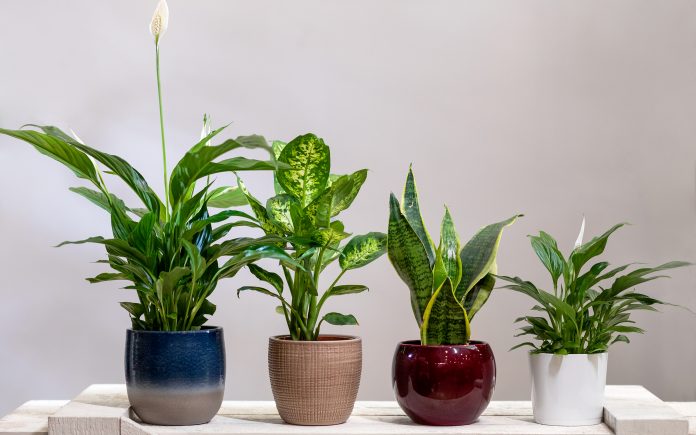
Unlike reality stars on TV, houseplants can be great companions! I want to help you in your journey to finding the best plants for your home. And, as always, please comment to ask specific questions… I love helping people with their indoor and outdoor gardens!
If you do not have an indoor plant, this is the week to invest in your first houseplant! January 10th is Houseplant Appreciation Day!
Plants that are cared for indoors can grow and thrive without the outside environmental aspects of sun, rainwater and fresh air. We just need to provide them with a good environment inside our house.
What should we consider before we choose that beautiful and coveted indoor plant? Think of where you will place the plant. What is the amount of space needed when the plant is 5 years of age? Re-potting a plant can send it into shock if it is moved from one place to another. Moving the plant to a larger container and a different amount of light may cause the plant to lose some leaves. When you move it to another location, ask yourself is there enough light for the plant to produce its new growth?
Some plants produce leaves or flowers that contain a poisonous substance. So, we definitely want to avoid those if you have children or pets in the home that could accidentally (or on purpose) eat them.
What requirements are needed to keep the plants healthy, because some like direct sun, while others like indirect sun? Soil is a consideration. Do not use dirt from your yard. Nutrients that are very necessary may not be available to the plant. Purchase the soil recommended for your type of plant. Give it a healthy start!
Containers
Based on the size of the roots, start your plants in a container that holds the roots and has room to grow. As the roots expand, move the plant to a pot that is one size larger. Do not go from small to an overly large container. If you re-pot the plant in a large container from a small container, the plant can’t adjust easily. An overly large container can also lead to root rot, from water standing in the pot.
The best way to know if your plant needs re-potting, gently pull it out of the container and look at the amount of root growth. If they are crowded, move up to a larger container.
Types of Houseplants
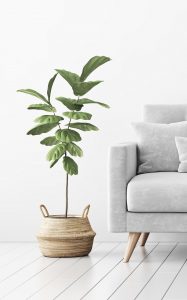
If you are like me, I would like one of each for their beauty, yet it is not practical to bring some plants indoors and expect them to adapt. In choosing the plant, you do not want to choose a plant that will not adapt to an inside environment. Plants that bloom, are not always the best indoor choice. Most of the plants we purchase are originally from a tropical area. My favorite plant is the Fiddle Leaf Fig scientific name Ficus lyrata. It is one of the most difficult plants to adapt to an indoor environment. You see them in magazines, and they are gorgeous. You bring one home and all the leaves fall off the first week. This plant does not like to be moved from one environment to another. The loss of leaves is the tree trying to adapt. If you are experienced and willing to take a chance, go for this beauty. If this is your first houseplant, try one of the five listed below. Then move up to the houseplants that will test your skills and patience.
The Five Best Indoor Plants
Peace Lily, scientific name: Spathiphyllum wallisii
This plant will do well in low light. It can grow to be 6 ft in height. Will produce white flowers, and they will grow taller that the leaves. Water when soil is dry. Fertilize every two months. Resistant to disease and insects.
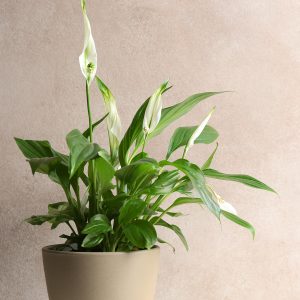
Snake Plant, scientific name: Sansevieria trifasciata
This plant has long, tall, spike-like leaves. It requires indirect light. It is happiest when the temperature stays the same It does not do well with extreme change in temperature. Requires a pot that will allow plenty of room for roots. Do not over-water. It can’t handle excess water. The roots will rot.

Pothos Ivy, scientific name: Epipremnum aureum
This is one of the easiest plants to grow. They can grow to be 50 feet in length! They do best in indirect light. Water when dry, but can tolerate being dry if you forget to water. Will grow from cuttings. Take a cutting place in soil or water, and roots will form in several weeks. Transfer to potting soil.
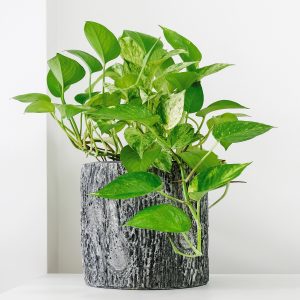
Dumb Cane, Scientific name: Dieffenbachia picta
Prefers low sunlight or partial shade. It is very important to allow the soil to dry between watering. Rotate the dieffenbachia houseplant regularly to provide adequate light to all sides of the plant and prevent it from reaching toward the light on one side.
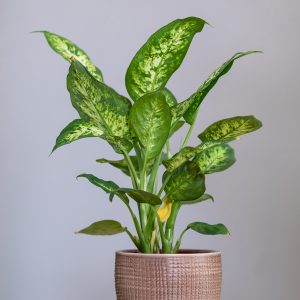
Spider Plant, Scientific name: Chlorophytum comosum
If you have not had a houseplant before, this specimen will be your crowning glory. If neglected it will survive. To keep it growing and producing the long tendrils that have small baby plants on the end, provide it basic care. Keep the soil from becoming overly dry. Inside the house, it will survive with 70 to 80 degrees F. It is a great outdoor plant as well. In the summer, this plant may produce 10 or more plants outdoors. Inside, it will also produce this many plants if cared for with water, soil and sunshine. The bonus is the number of plants that it will produce. Each one can be removed and placed in a pot for starting a new plant or even for gifting to a friend!
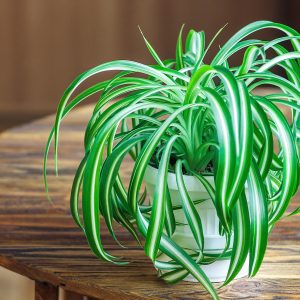
These are just five possible indoor plants. You can find simple to exotic types, and if you are just starting out, the above list will give you success if you follow directions of soil, water, fertilizer and sunlight. Once you realize that you can master these “easy to care for” plants, you are ready to take on the Fiddle Leaf Fig.







